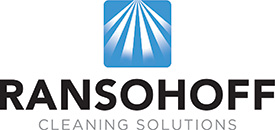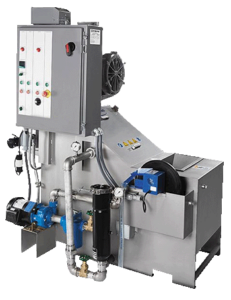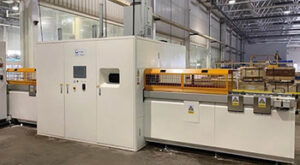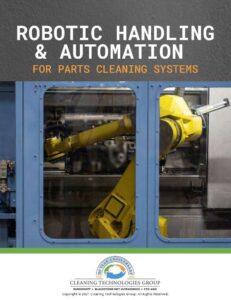Sustainability is not just a trendy term – in the manufacturing world, it’s a strategic priority. As environmental regulations tighten and companies face growing pressure to minimize their carbon footprint, more operations are evaluating how every part of their process can become greener, including parts cleaning. That’s where aqueous parts cleaning systems brings serious advantages.
The Ransohoff team has seen firsthand how aqueous cleaning systems are helping manufacturers clean effectively while supporting eco-friendly initiatives. Let’s take a closer look at how these systems work and why they’re the right choice for sustainable operations.
What Are Aqueous Cleaning Systems?
Aqueous cleaning systems use water-based solutions, often combined with biodegradable detergents, to remove contaminants such as oil, grease, metal chips, and particulates from parts. Unlike traditional solvent-based cleaning systems that rely on harsh chemicals, aqueous systems prioritize environmental safety and operator health.
1. Environmentally Safer Chemistry
One of the biggest advantages of aqueous systems is their use of non-toxic, biodegradable cleaning solutions. These systems significantly reduce or eliminate volatile organic compounds (VOCs) and hazardous air pollutants (HAPs) associated with solvent-based cleaning. As a result, manufacturers can reduce regulatory burden, improve air quality in their facility, and better protect their workforce.
2. Reduced Waste and Easier Disposal
Aqueous cleaning processes generate less hazardous waste, which simplifies disposal and lowers costs. Many systems include built-in filtration and oil separation to extend the life of the cleaning solution and reduce the frequency of fluid replacement. This not only improves sustainability but also keeps operating costs in check.
3. Energy-Efficient Operation
Modern aqueous systems are engineered for efficient heat management, optimized spray pressure, and intelligent process controls. These features help reduce overall energy consumption and allow companies to maintain high cleaning standards without excess power usage.
4. Better Compatibility with Automation
Aqueous systems are highly compatible with automated parts handling, allowing seamless integration into high-volume production lines. This reduces manual labor, increases throughput, and supports lean manufacturing goals, all while improving environmental outcomes.
5. Regulatory Compliance and Green Certifications
Using aqueous systems can help companies meet ISO 14001 environmental management standards and other sustainability certifications. Many industries, including automotive, aerospace, and medical device manufacturing, are now prioritizing suppliers who demonstrate environmentally responsible practices. Adopting aqueous cleaning is a step toward becoming a preferred supplier.
A Cleaner Way Forward
As industries continue to evolve, aqueous parts cleaning systems offer a practical, scalable, and environmentally sound alternative to traditional methods. Whether you’re looking to improve workplace safety, meet compliance requirements, or simply do your part for the environment, aqueous systems can help you get there.
Ransohoff is proud to offer a full line of aqueous parts cleaning systems engineered to meet your toughest cleaning challenges while aligning with your sustainability goals. Contact us today to learn more about how we can help your operation clean smarter and greener.

 Introducing the Mini Parts Washer
Introducing the Mini Parts Washer  RANSOHOFF RBS MODULAR SYSTEM
RANSOHOFF RBS MODULAR SYSTEM  New eBook Highlights Robotic & Automation Parts Cleaning Advantages
New eBook Highlights Robotic & Automation Parts Cleaning Advantages